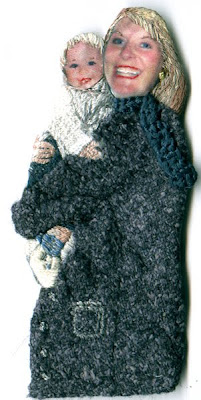 Yesterday was the monthly coffee morning for those volunteers at the Tapestry who still keep in touch. If anyone is reading this who wants to join the meetings just pop down to the Tiled Hall at the Art Gallery/Library on the last Friday of each month at 11 am. The function starts with a drink and often extends to lunch as well.
Yesterday was the monthly coffee morning for those volunteers at the Tapestry who still keep in touch. If anyone is reading this who wants to join the meetings just pop down to the Tiled Hall at the Art Gallery/Library on the last Friday of each month at 11 am. The function starts with a drink and often extends to lunch as well.The tiled hall was a hidden gem of the city while the Tapestry was being designed and stitched but would definitely have been chosen in 2010. The ceiling is magnificent, but photographs taken yesterday were too poor to post here.
Another ceiling worthy of mention is in the auditorium of the Grand Theatre which has recently had a major makeover. This was included on the Arts panel, hand stitched by Godfrey Harland.
The Grand Theatre has its own book, "Grand Memories" by Patricia Lennon and David Joy, published in 2006 which gives a lot of information about the history, performances, performers there and some beautiful photographs.
The first performance at the theatre was Shakespeare's "Much Ado About Nothing" on November 18th, 1878. In 1969 there was a plan to destroy the building and replace it with a 22 storey office block - fortunately the planning application was turned down, mainly because of its Grade II listing. Now, back to its former glory it's open for business again with the additional venue of the Assembly Rooms for smaller concerts and performances.



























